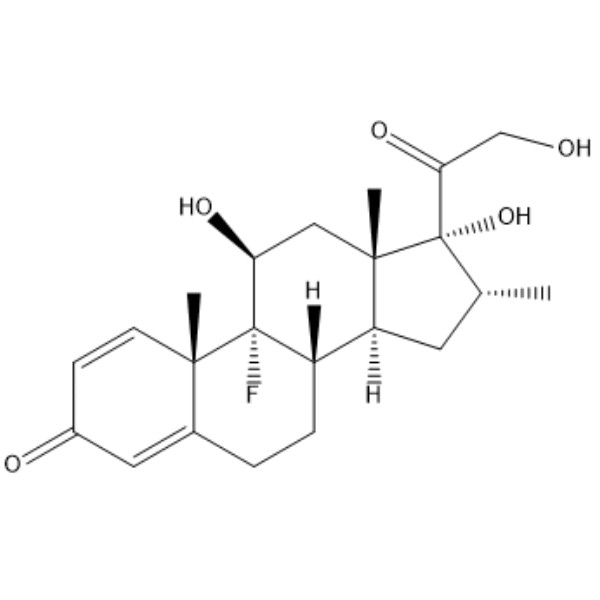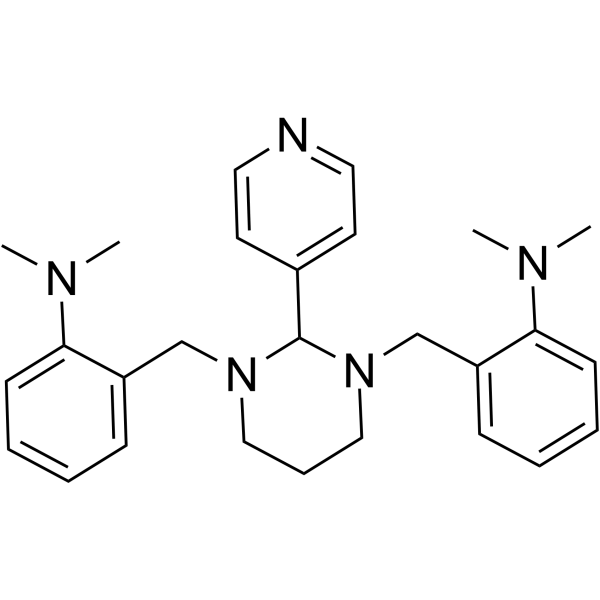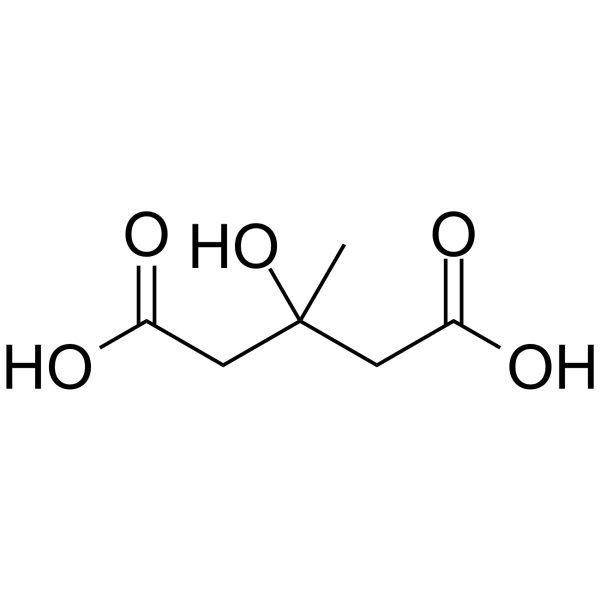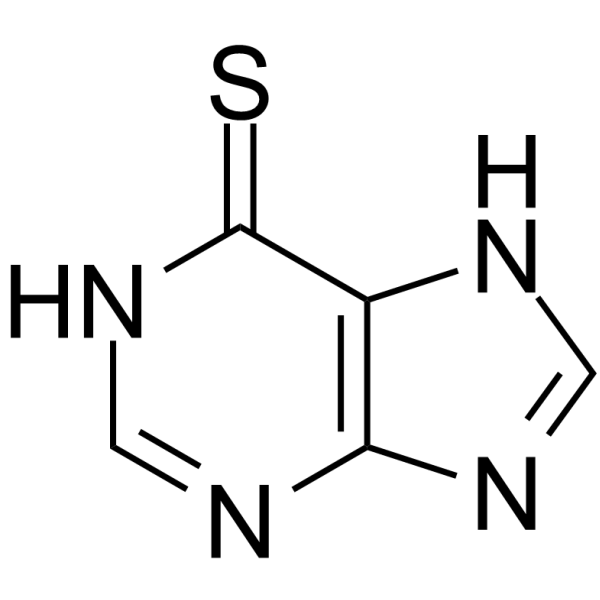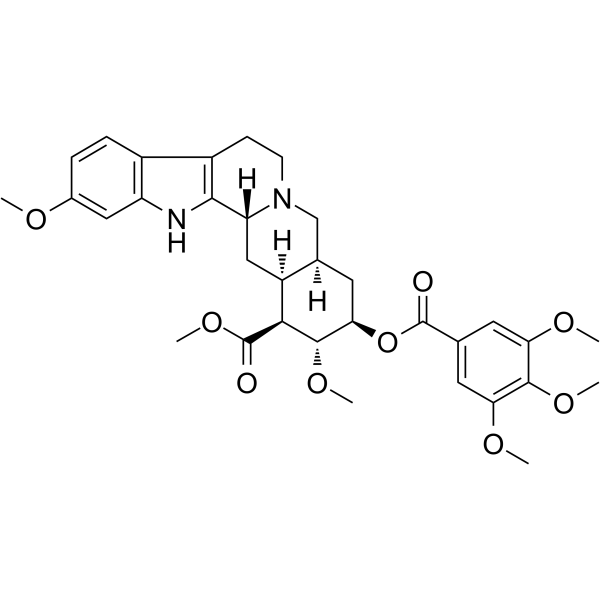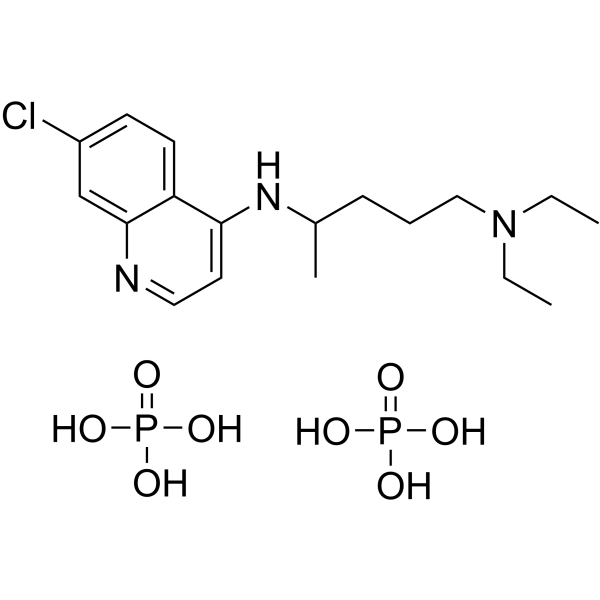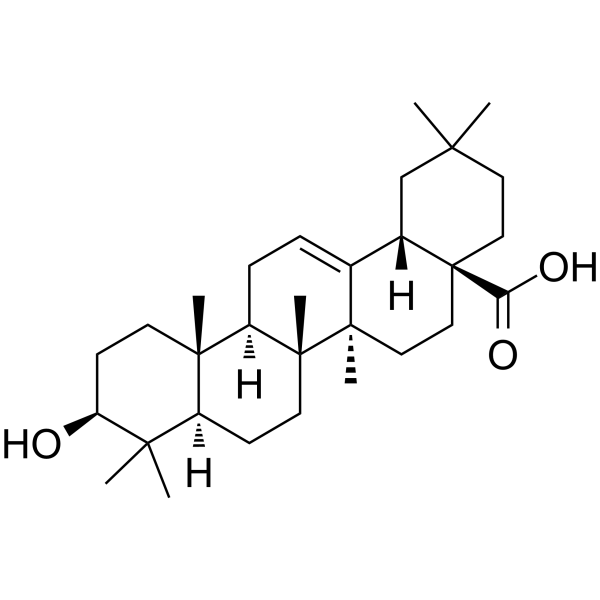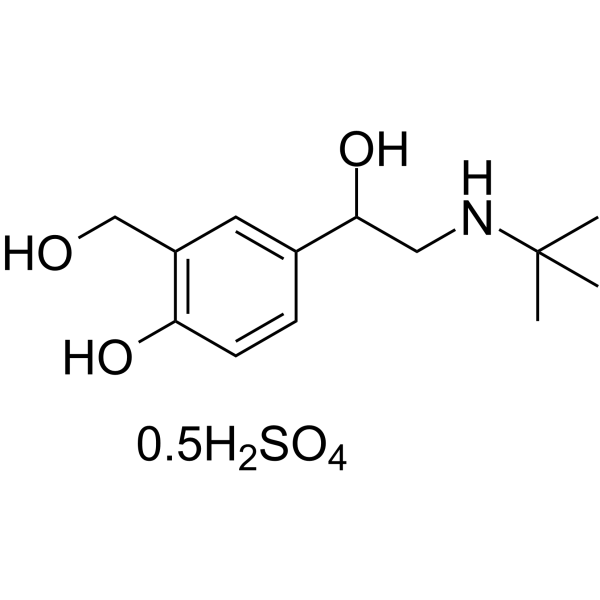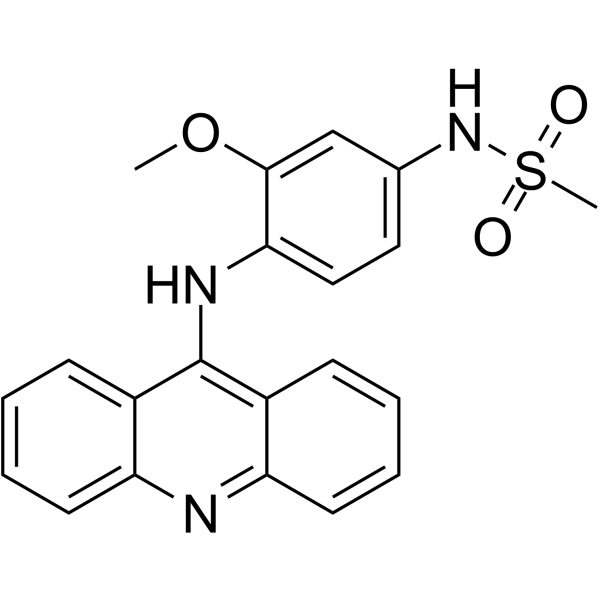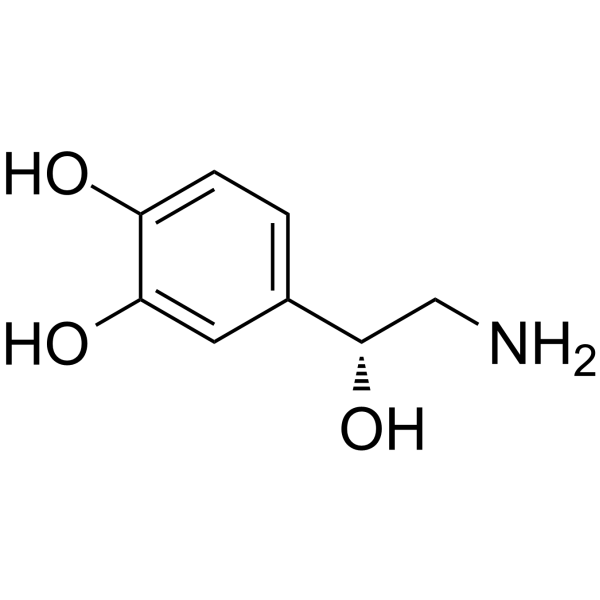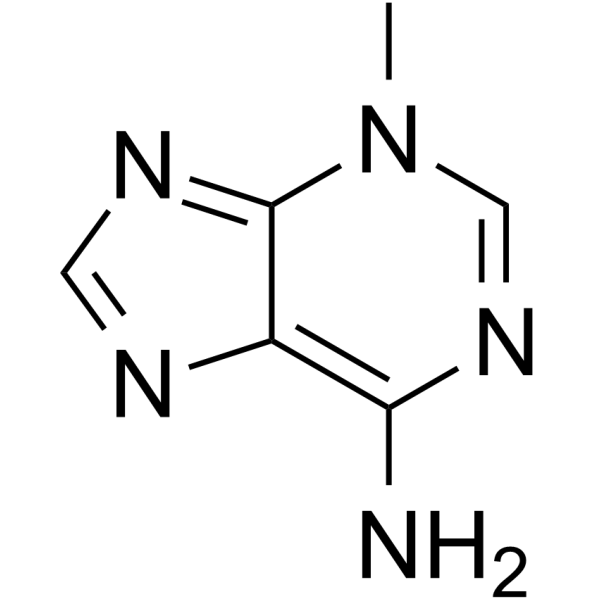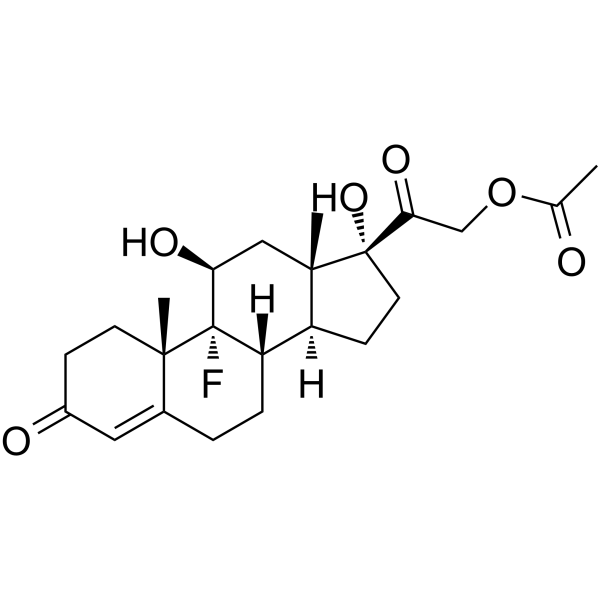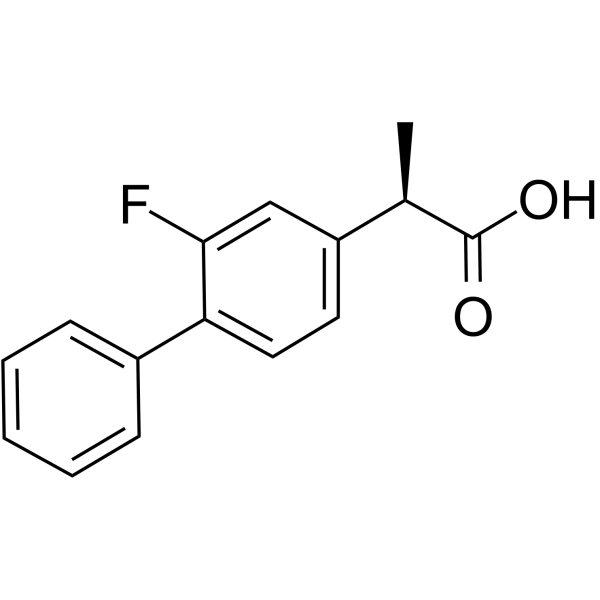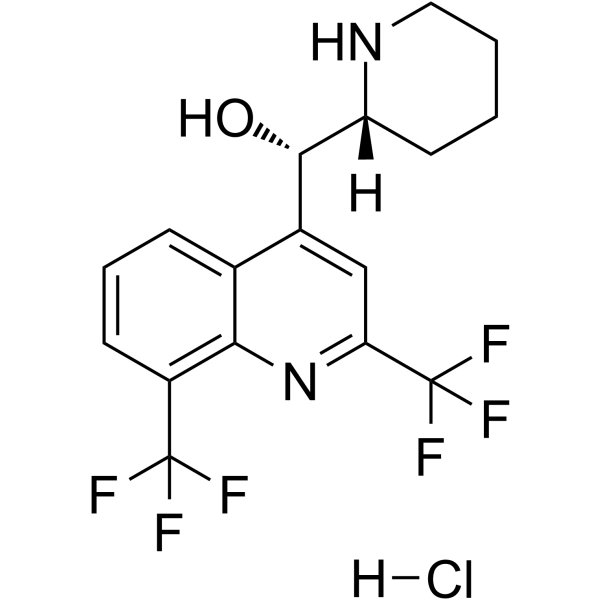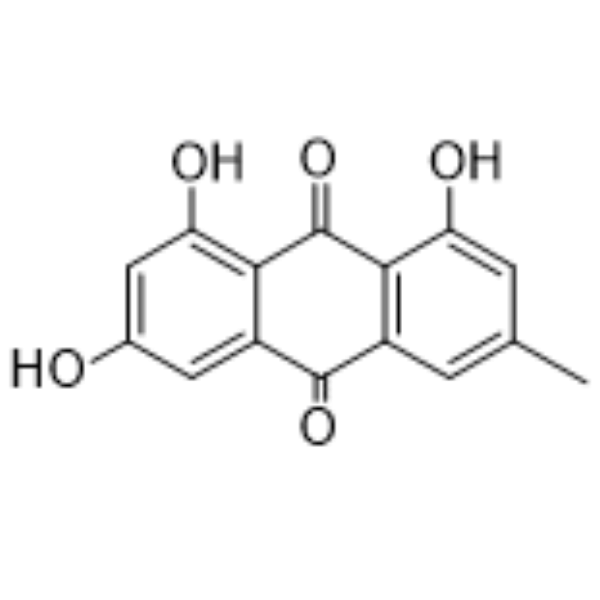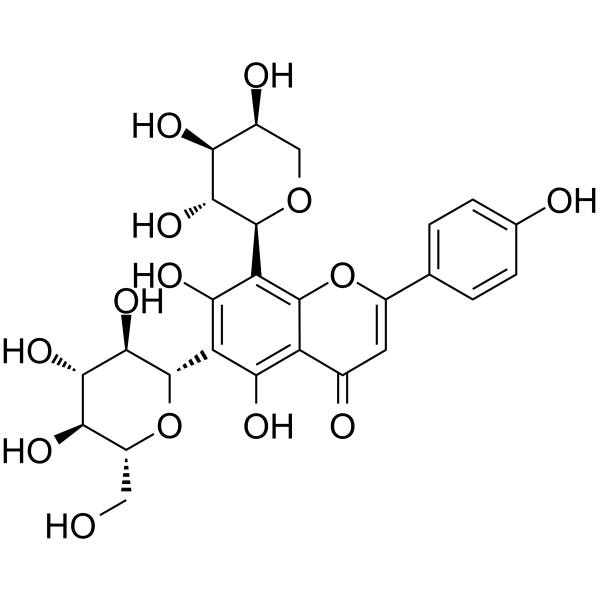|
BP12698
|
Dexamethasone
|
|
|
|
|
Dexamethasone is a glucocorticoid receptor agonist and an IL receptor modulator.Dexamethasone inhibits production of exosomes containing inflammatory microRNA-155 in lipopolysaccharide-induced macrophage inflammatory responses
|
|
BP12699
|
GANT 61
|
|
|
|
|
GANT 61 is an inhibitor for Gli1 and Gli2.
|
|
BP12700
|
yangonin
|
|
|
|
|
Yangonin is a novel CB receptor ligand, it exhibits affinity for the human recombinant CB receptor. Yangonin could be a valuable candidate for the intervention of NF-κB-dependent pathological conditions such as inflammation.
|
|
BP12701
|
BI-D1870
|
|
|
|
|
BI-D1870 is a cell-permeable, ATP-competitive inhibitor of ribosomal S6 kinases (RSKs; IC50s: 31/24/18/15 nM for RSK1/2/3/4).
|
|
BP12702
|
Meglutol
|
|
|
|
|
Meglutol is an antilipemic agent which lowers cholesterol, triglycerides, serum beta-lipoproteins and phospholipids. It acts by interfering with the enzymatic steps involved in the conversion of acetate to hydroxymethyl glutaryl coenzyme A as well as inhibiting the activity of HYDROXYMETHYLGLUTARYL COA REDUCTASES which is the rate-limiting enzyme in the biosynthesis of cholesterol.
|
|
BP12703
|
6-Mercaptopurine
|
|
|
|
|
Mercaptopurine is an antimetabolite antineoplastic agent with immunosuppressant properties. It interferes with nucleic acid synthesis by inhibiting purine metabolism and is used, usually in combination with other drugs, in the treatment of or in remission maintenance programs for leukemia.
|
|
BP12704
|
Reserpine
|
|
|
|
|
Reserpine is an alkaloid found in the roots of Rauwolfia serpentina and R. vomitoria. Reserpine inhibits the uptake of norepinephrine into storage vesicles resulting in depletion of catecholamines and serotonin from central and peripheral axon terminals. It has been used as an antihypertensive and an antipsychotic as well as a research tool, but its adverse effects limit its clinical use.
|
|
BP12705
|
Chloroquine phosphate
|
|
|
|
|
Chloroquine is an aminoquinoline antimalarial and also is widely used as an autophagy inhibitor. Chloroquine also is an inhibitor of toll-like receptors (TLRs).
|
|
BP12706
|
Aspirin
|
|
|
|
|
Acetylsalicylic acid is a potent and selective inhibitor of COX with various pharmacological activities, such as anti-inflammation and pain relief. Acetylsalicylic acid is a histone deacetylase inhibitors to up-regulate cell cycle arrest protein p21, which can suppresses ovarian Y cells harboring COX-1. Acetylsalicylic acid also inhibits the expression of COX-2 in HUVEC and neonatal rat ventricular cardiomyocytes, and then reduce PG production and the down-regulation of ERK and NF-KB, respectively.
|
|
BP12707
|
Oleanolic Acid
|
|
|
|
|
Oleanolic acid (Caryophyllin) is a natural compound with anti-tumor activities, which are widely distributed in plants.
|
|
BP12708
|
Liensinine diperchlorate
|
|
|
|
|
|
|
BP12709
|
Salbutamol hemisulfate
|
|
|
|
|
Salbutamol Sulfate is a short-acting β2-adrenergic receptor agonist with an IC50 of 8.93 μM.
|
|
BP12710
|
Amsacrine
|
|
|
|
|
Amsacrine (mAMSA) an antineoplastic agent which can intercalate into the DNA of tumor cells. Amsacrine also expresses topoisomerase inhibitor activity, specifically inhibiting topoisomerase II.
|
|
BP12711
|
Norepinephrine
|
|
|
|
|
Norepinephrine can stimulate apoptosis in adult rat ventricular myocytes by activation of the β-adrenergic pathway. It can up-regulate the expression of vascular endothelial growth factor, matrix metalloproteinase (MMP)-2, and MMP-9 in nasopharyngeal carcinoma tumour cells.
|
|
BP12712
|
3-Methyladenine
|
|
|
|
|
3-Methyladenine (3-MA) is a selective PI3KV inhibitor, and the IC50s against ps34 and PI3Kγ were 25/60 μM in HeLa cells, respectively.
|
|
BP12713
|
Fludrocortisone acetate
|
|
|
|
|
Fludrocortisone, a glucocorticoid-receptor agonist, binds to cytoplasmic receptors, translocates to the nucleus, and subsequently initiates the transcription of glucocorticoid-responsive genes such as lipocortins to inhibit phospholipase A2 (PLA2). Fludrocortisone Acetate is the acetate salt of a synthetic fluorinated corticosteroid with anti-inflammatory and antiallergic activities. Inhibition of PLA2 activity prevents the release of arachidonic acid, a precursor of eicosanoids such as prostaglandins and leukotrienes; eicosanoids are important mediators in the pro-inflammatory response mechanism. As a mineralocorticoid-receptor agonist, this agent stimulates Na+ reabsorption and water retention and K+ and H+ secretion in the distal tubules and collecting ducts of the kidney.
|
|
BP12714
|
Tarenflurbil
|
|
|
|
|
Tarenflurbil ((R)-Flurbiprofen) is the R-enantiomer of the racemate NSAID Flurbiprofen, Tarenflurbil ((R)-Flurbiprofen) inhibits the binding of [3H]9-cis-RA to RXRα LBD with IC50 of 75 μM. Tarenflurbil can be used for Alzheimer's disease research.
|
|
BP12715
|
Mefloquine hydrochloride
|
|
|
|
|
Mefloquine is a quinoline derivative used for the prevention and therapy of P. falciparum malaria.
|
|
BP12716
|
Emodin
|
|
|
|
|
Emodin is a naturally occurring anthraquinone present in the roots and barks of numerous plants; exerts antiproliferative effects in Y cells that are regulated by different signaling pathways.
|
|
BP12717
|
Schaftoside
|
|
|
|
|
Schaftoside has antioxidant and anticancer activity.
|
